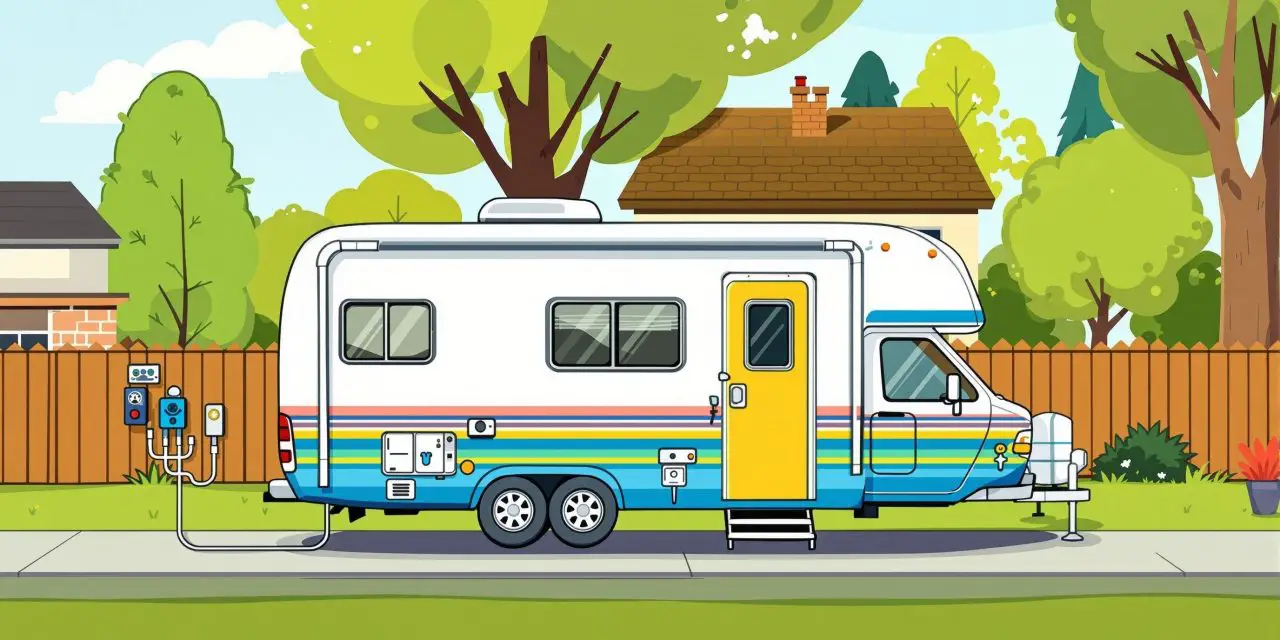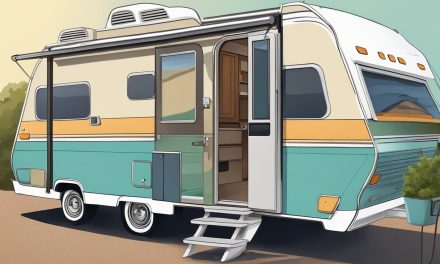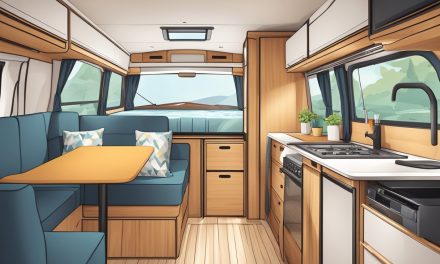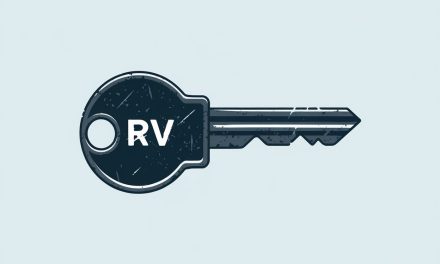Would you like to save this article?
Are you wondering can an RV be an ADU? You’re not alone! With housing costs continuing to rise and more families needing flexible living solutions, many property owners are exploring creative alternatives. Recreational vehicles (RVs) as Accessory Dwelling Units (ADUs) have become an increasingly popular housing solution.
The short answer is yes, but there’s much more to the story.
According to industry data, approximately 1 million Americans live in RVs full-time, while over 11 million households own recreational vehicles. This growing trend has sparked interest in using RVs as permanent or semi-permanent housing solutions on residential properties. Understanding the legal, practical, and financial aspects can help you make an informed decision about whether an RV-ADU setup works for your situation.
1. What Exactly Is an RV-ADU and How Does It Work?
An RV-ADU is a recreational vehicle that serves as an accessory dwelling unit on a residential property. Unlike traditional ADUs that are built structures, RV-ADUs use existing recreational vehicles as secondary housing units. These setups typically require permanent utility connections including electricity, water, sewer, and sometimes natural gas.
The concept works by treating your RV as a mobile ADU that provides complete living facilities. Most successful RV-ADU arrangements include a full kitchen, bathroom, sleeping areas, and living space within the vehicle. The key difference from regular RV parking is the permanent nature of the installation and utility hookups.
State regulations vary dramatically regarding RV-ADUs. Some states have embraced ADU-friendly laws, while others maintain stricter requirements. In most jurisdictions, the RV must meet specific criteria including minimum square footage, structural integrity, and safety standards.
For legal compliance, many areas require the RV to be permanently anchored to the property and connected to municipal utilities rather than relying on tanks and generators. This distinguishes it from temporary RV parking or camping situations.
Just remember, explaining RV-ADU rules to your neighbors might be more complicated than explaining why you need three different streaming services for one TV show.
2. Legal Requirements and Zoning Laws by State
California offers some of the most RV-ADU friendly regulations in the nation. The state has implemented legislation that exempts smaller accessory dwelling units from many impact fees. California requires reasonable setbacks from property lines and allows ADUs of various sizes depending on local regulations.
Florida permits full-time RV living as long as the vehicle connects to utilities and meets local building codes. The state requires proper waste disposal systems and fire safety compliance. Many Florida counties allow RV-ADUs with appropriate permits.
Texas varies significantly by county. Some metropolitan areas have embraced ADU-friendly policies, while rural counties maintain stricter regulations. Texas generally requires proper septic or sewer connections for permanent RV installations.
Northeastern states like New York and Massachusetts have been updating their ADU laws to be more accommodating. Many states have passed legislation encouraging local municipalities to adopt ADU-friendly zoning ordinances.
| State Category | RV-ADU Status | Key Requirements | Permit Process |
|---|---|---|---|
| ADU-Friendly States | Highly Permitted | Utilities, setbacks | Streamlined |
| Moderate States | Conditionally Permitted | Building codes, utilities | Standard |
| Restrictive States | Limited Permission | Extensive requirements | Complex |
| Rural Areas | Varies Widely | Local determination | Highly Variable |
Navigating state RV-ADU laws is like trying to understand why every streaming platform has different rules for the same movie – it’s confusing, but eventually you figure out what works where.
3. Cost Analysis: RV-ADUs vs Traditional ADUs
Traditional ADU construction costs typically range from $100,000 to $400,000 depending on size, location, and finishes. In contrast, RV-ADU setups generally cost between $30,000 to $100,000 including the RV purchase and utility installations.
The initial investment breakdown for RV-ADUs includes the recreational vehicle ($20,000-$80,000), utility hookups ($5,000-$20,000), permits and inspections ($2,000-$8,000), and site preparation ($3,000-$12,000). These costs represent significant savings compared to traditional construction.
Ongoing expenses include utility costs, maintenance, insurance, and potential property tax increases. RV-ADUs typically consume 10-30% less energy than traditional ADUs due to their smaller size and efficient design.
Financing options differ significantly between the two approaches. Traditional ADUs qualify for home equity loans and construction financing, while RV-ADUs might require recreational vehicle loans or personal financing.
Rental income potential for RV-ADUs varies widely by location and amenities, typically ranging from $600-$2,000 monthly. This compares favorably to traditional ADU rental rates while requiring much lower upfront investment.
The math on RV-ADUs is like buying generic cereal instead of name brand – you get basically the same thing for way less money, and your wallet thanks you later.
4. Utility Connections and Infrastructure Requirements
Electrical connections for RV-ADUs require 30-50 amp service depending on the vehicle’s needs. Most installations need dedicated electrical panels and professional wiring to meet code requirements. The electrical system must handle air conditioning, heating, appliances, and lighting simultaneously.
Water and sewer hookups represent the most complex infrastructure challenge. Permanent plumbing connections require trenching, pipe installation, and integration with existing home systems. Many areas mandate separate water meters or sub-metering for ADU installations.
Internet and telecommunications typically require additional service lines or wireless solutions. High-speed internet has become essential for remote work situations, which many RV-ADU residents depend on for income.
Heating fuel systems often supplement electrical heating and cooking. Professional installation ensures safety compliance and proper ventilation. Some jurisdictions require natural gas conversions for permanent installations, while others allow propane systems.
The total utility installation cost typically ranges from $8,000-$25,000 depending on distance from main services and local requirements. Professional installation is almost always required for code compliance and safety.
Setting up RV utilities is like trying to plug your phone charger into a wall outlet in an old house – you know it should work, but you might need some creative adapters and maybe an electrician.
5. Size and Space Requirements for RV-ADUs
Minimum size requirements vary by jurisdiction but typically range from 300-800 square feet for ADU classification. Most travel trailers and fifth wheels easily meet these requirements, while smaller RVs might not qualify under ADU regulations.
Maximum size limitations usually cap RV-ADUs at 800-1,500 square feet to maintain their accessory status. Larger RVs might trigger different zoning classifications and additional regulations.
Interior space efficiency becomes crucial in RV-ADU design. Successful installations maximize multi-functional spaces including convertible dining areas, fold-down beds, and compact appliance configurations.
Outdoor living areas significantly expand the functional space. Many RV-ADU setups include permanent decks, awnings, or enclosed porches that can effectively double the usable living space.
Storage solutions require creative planning since RVs offer limited built-in storage compared to traditional homes. External storage buildings or creative interior solutions often supplement RV-ADU installations.
| RV Type | Typical Size Range | ADU Eligibility | Best Use Case |
|---|---|---|---|
| Travel Trailer | 200-450 sq ft | Variable | Seasonal/temporary |
| Fifth Wheel | 300-600 sq ft | Good | Long-term housing |
| Class A Motorhome | 300-700 sq ft | Excellent | Luxury ADU setup |
| Park Model RV | 400-500 sq ft | Excellent | Permanent installation |
Planning RV-ADU space is like playing Tetris with furniture – everything has to fit perfectly, but once you figure it out, you’re amazed at what you can squeeze in there.
6. Permits, Inspections, and Compliance Process
Building permits for RV-ADUs typically cost $1,000-$6,000 depending on local fees and project scope. The application process requires detailed site plans, utility connections, and RV specifications.
Inspection requirements usually include electrical, plumbing, and general safety inspections. Some jurisdictions require structural engineering reports to verify the RV’s suitability for permanent installation.
Fire safety compliance involves smoke detectors, carbon monoxide detectors, and proper egress requirements. Many areas require fire-rated skirting around the RV base and documented emergency escape plans.
Health department approvals focus on wastewater systems and potable water connections. Septic system permits may be required if municipal sewer service isn’t available.
The timeline for approvals typically takes 4-16 weeks from application to final inspection. Complex installations or areas with limited ADU experience may require additional time.
Ongoing compliance may require periodic inspections and permit renewals in some jurisdictions. Property owners must maintain records of all installations and modifications.
Getting RV-ADU permits is like getting your teenager to clean their room – it takes patience, persistence, and probably costs more than you expected, but eventually it gets done.
7. Insurance and Financial Considerations
Insurance coverage for RV-ADUs requires specialized policies that bridge recreational vehicle and residential property insurance. Standard homeowner’s policies typically exclude permanent RV installations.
Liability coverage becomes complex when RV-ADUs generate rental income. Landlord or rental property insurance may be required for rental situations, typically adding $200-$1,000 annually to insurance costs.
Property tax implications vary significantly by location. Some areas assess RV-ADUs as personal property rather than real estate improvements, potentially reducing tax increases compared to traditional ADUs.
Financing challenges arise because RV-ADUs don’t typically increase property value like traditional ADUs. Lenders may be reluctant to finance improvements that don’t add equivalent collateral value.
Rental income taxation follows standard rental property rules, but depreciation calculations differ for RVs versus permanent structures. Professional tax advice is recommended for rental situations.
Resale considerations include the ability to relocate the RV versus permanent installation modifications. Removable installations preserve more flexibility but may not maximize rental income potential.
Insuring an RV-ADU is like trying to explain to your insurance agent why you need coverage for something that’s both a house and a vehicle – they’ll figure it out, but expect some confused phone calls first.
8. Maintenance and Long-term Durability
Weather resistance represents the primary maintenance challenge for RV-ADUs. Regular roof sealing, window maintenance, and exterior care prevent water damage that can destroy an RV quickly.
HVAC system maintenance requires more attention than traditional homes due to smaller spaces and higher usage rates. Regular filter changes and annual professional servicing maintain efficiency and prevent breakdowns.
Plumbing winterization becomes critical in cold climates. Permanent installations require heated skirting or protected utility areas to prevent freeze damage to water lines.
Appliance replacement cycles run faster in RVs due to compact, lightweight construction. Major appliances typically need replacement every 5-12 years versus 15-25 years in traditional homes.
Structural maintenance includes checking frame integrity, floor support, and wall stability. RVs experience more movement and settling than traditional structures, requiring regular inspections.
Expected lifespan for well-maintained RV-ADUs ranges from 15-30 years depending on construction quality, climate conditions, and maintenance practices. This compares to 30-50+ years for traditional ADU construction.
Maintaining an RV-ADU is like caring for a sports car instead of a pickup truck – it needs more attention and gentler handling, but it can still get the job done if you treat it right.
Conclusion: Is an RV-ADU Right for You?
Can an RV be an ADU? Absolutely, but success depends on careful planning, legal compliance, and realistic expectations. RV-ADUs offer an affordable entry point into accessory dwelling unit ownership while providing flexible housing solutions.
The key advantages include significantly lower costs, faster installation, and relocation flexibility. However, challenges include regulatory complexity, higher maintenance requirements, and financing limitations.
Best candidates for RV-ADUs include property owners seeking affordable rental income, families needing housing for relatives, investors wanting to test ADU markets before major construction investments, or those requiring flexible housing solutions.
The trend toward RV-ADU acceptance continues growing as housing shortages persist and regulations evolve. Property owners who research thoroughly and plan carefully often achieve successful outcomes.
Consider consulting with local planning departments, experienced contractors, and insurance professionals before committing to an RV-ADU project. Proper planning prevents costly mistakes and ensures legal compliance while maximizing your investment potential.
Meta Description: Discover if an RV can be an ADU with this complete guide covering legal requirements, costs, permits, and practical considerations for using recreational vehicles as accessory dwelling units.
Sources:
- California Housing and Community Development
- RV Industry Association Statistics
- Consumer Affairs RV Ownership Statistics
- A+ Construction & Remodeling RV ADU Guide
- RV Doctor State Living Laws





